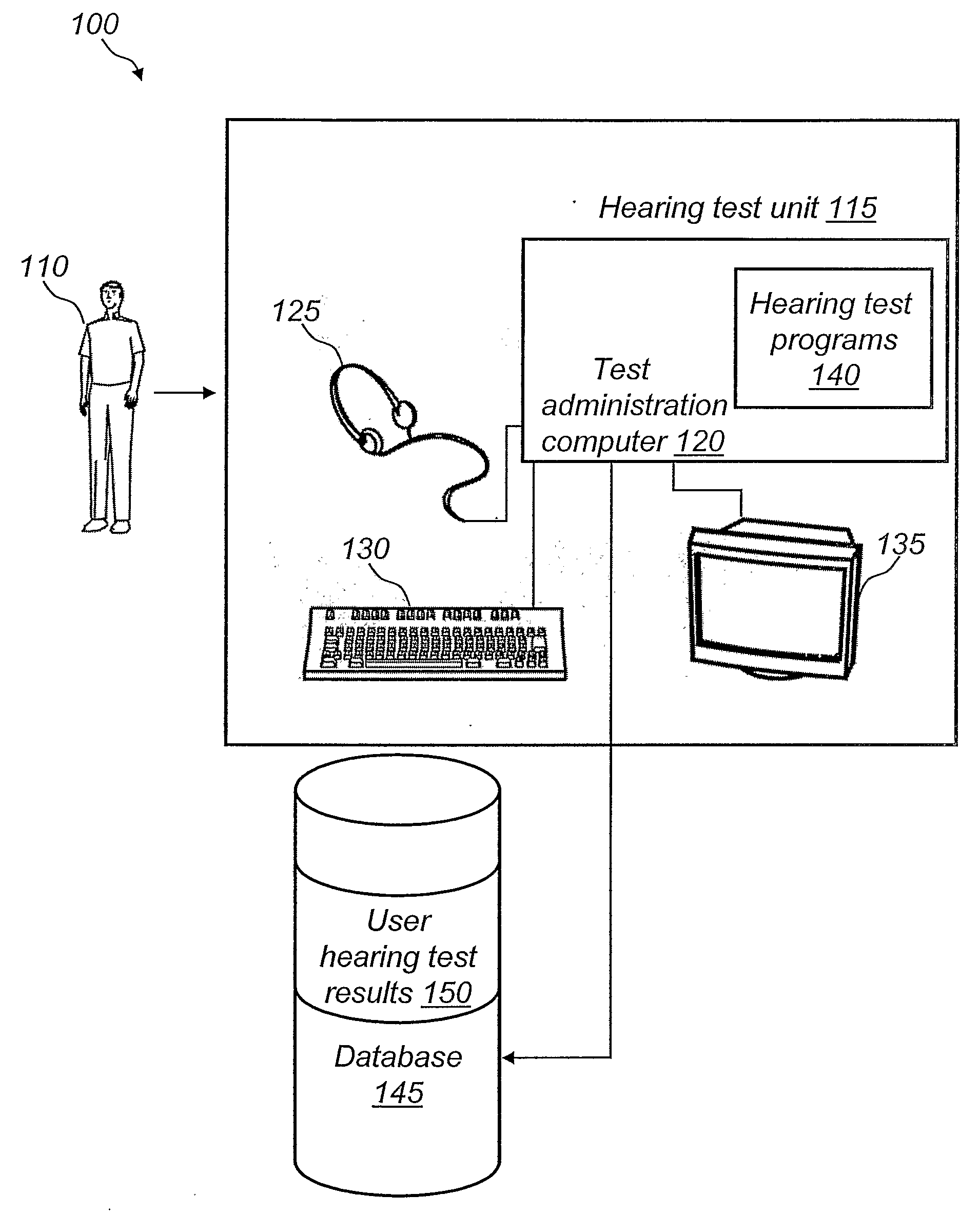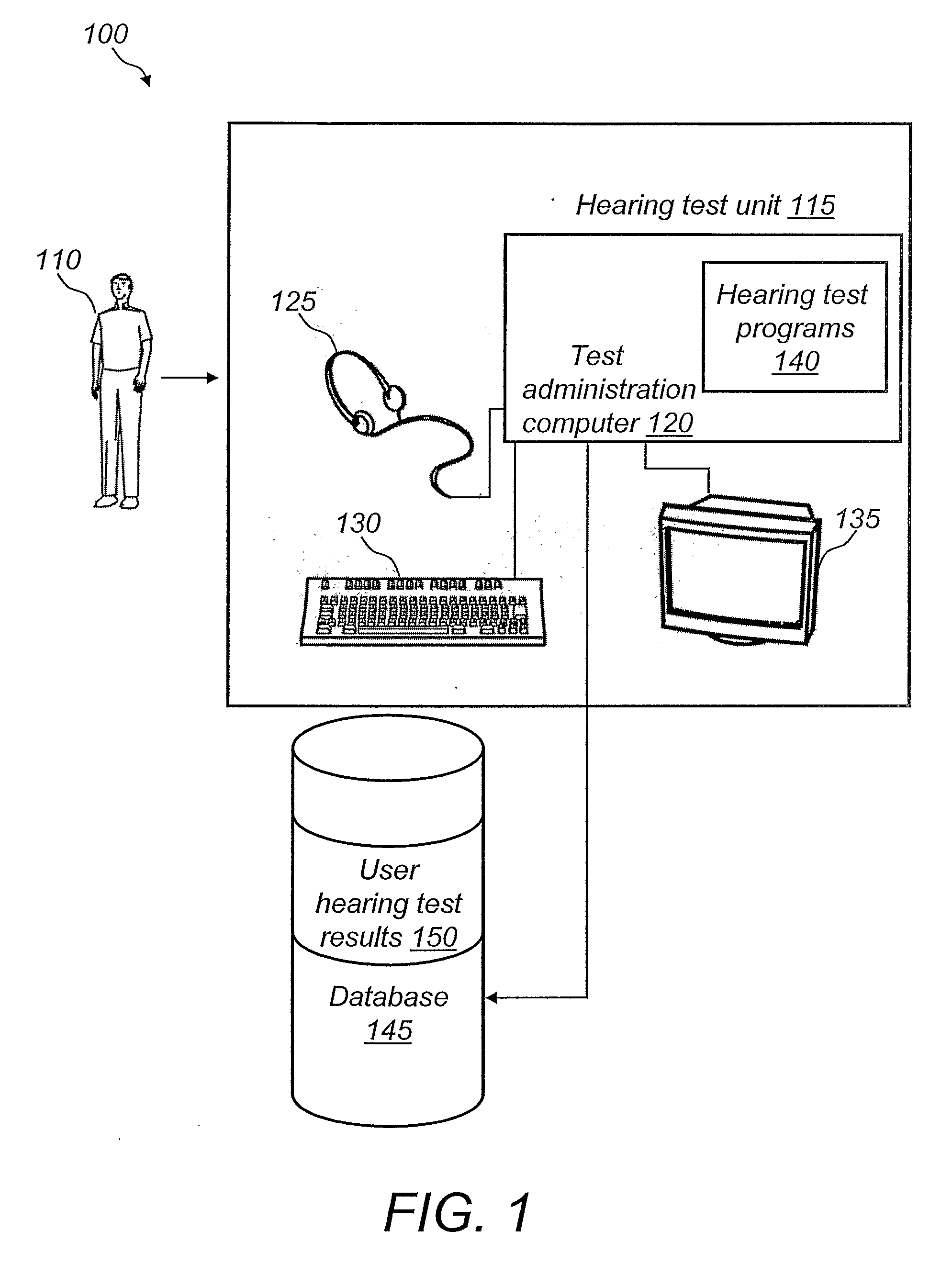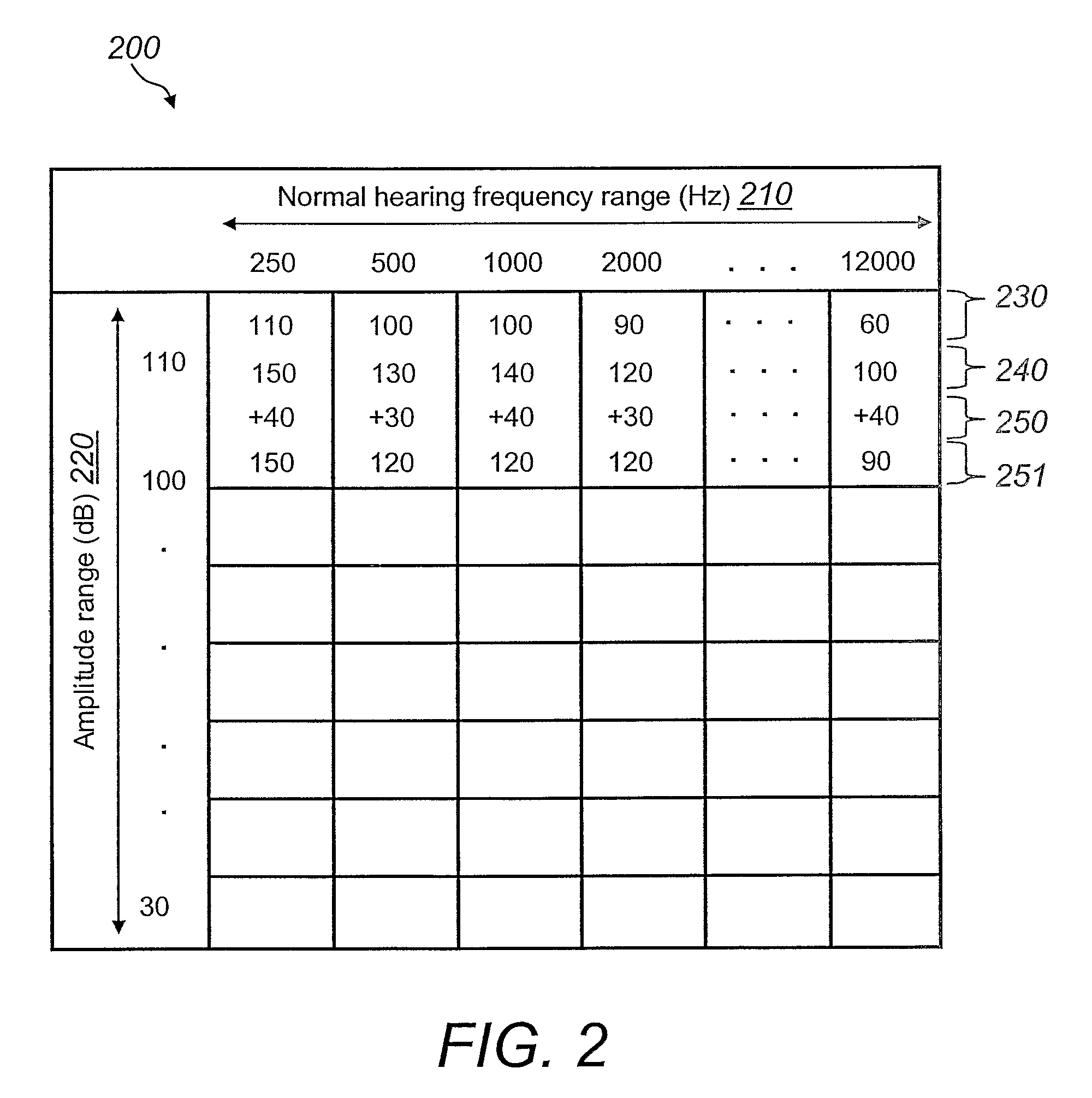At-Home Hearing Aid Training System and Method
a hearing aid and training system technology, applied in the field of hearing aid training systems, can solve the problems of individual hearing loss, increased impact of hearing loss, and increased difficulty in understanding the severity of hearing loss, and achieve the effect of quick creation of customized training methods
- Summary
- Abstract
- Description
- Claims
- Application Information
AI Technical Summary
Benefits of technology
Problems solved by technology
Method used
Image
Examples
Embodiment Construction
[0029]FIG. 1 is a high-level diagram of a system 100, consisting of a user 110, a hearing test unit 115, a test administration computer 120, a pair of headphones 125, a keyboard 130, a monitor 135, a series of hearing test programs 140, a database 145, and a plurality of user hearing test results 150.
[0030]User 110 represents an individual on whom a hearing test is to be administered. Hearing test unit 115 includes a test administration computer 120, which includes conventional headphones 125, conventional keyboard 130, and conventional monitor 135, all used for testing. For example, conventional monitor 135 can graphically display test frequencies and amplitudes for user 110, while user 110 is being tested.
[0031]Test administration computer 120 runs a series of current hearing test programs 140 and may store the results of the tests. Test administration computer 120 is also responsible for communicating with database 145. Database 145 is a central database repository to store user ...
PUM
 Login to View More
Login to View More Abstract
Description
Claims
Application Information
 Login to View More
Login to View More - R&D
- Intellectual Property
- Life Sciences
- Materials
- Tech Scout
- Unparalleled Data Quality
- Higher Quality Content
- 60% Fewer Hallucinations
Browse by: Latest US Patents, China's latest patents, Technical Efficacy Thesaurus, Application Domain, Technology Topic, Popular Technical Reports.
© 2025 PatSnap. All rights reserved.Legal|Privacy policy|Modern Slavery Act Transparency Statement|Sitemap|About US| Contact US: help@patsnap.com



